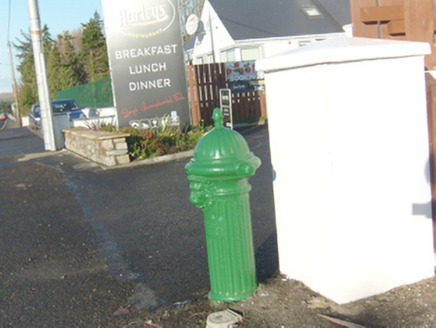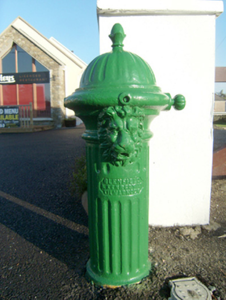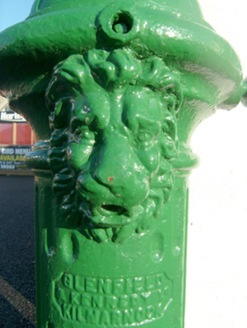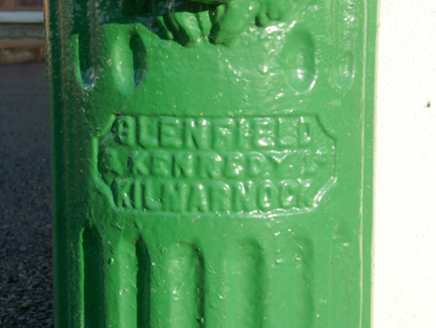Survey Data
Reg No
40813007
Rating
Regional
Categories of Special Interest
Social, Technical
Original Use
Water pump
Date
1900 - 1930
Coordinates
205885, 430639
Date Recorded
22/11/2010
Date Updated
--/--/--
Description
Freestanding cast-iron water hydrant, erected c. 1910, comprising fluted shaft on moulded base surmounted by fluted domed capping with acorn finial over, and having lion's head motif to spout. Pull lever to side. Foundry mark 'Glenfield & Kennedy Ltd, Kilmarnock' to shaft. Located to the north-west end of Creeslough adjacent to modern rendered gate pier.
Appraisal
An attractive piece of mass-produced cast-iron, which is an appealing and subtle feature in the streetscape to the north-west end of Creeslough. This particular example is notable due to its excellent preservation. This water hydrant is of particular importance as a reminder of the mechanisms installed for the supply of clean drinking water in the period before mains water supply systems. The various fluted details, and the moulded lion's head motif in particular, enhances the artistic design quality of the piece, and indicates the equal importance of aesthetics as well as functionality. This lion's head motif may be a reference to the British Empire. The foundry mark indicates that it was made at the Glenfield and Kennedy Ltd. Foundry in Scotland, which was the major company producing and selling cast-iron water mechanisms within the British Empire during the late-nineteenth and early-twentieth century. (Kennedy Patent Water Meter Co. Ltd. was formed in 1863 from a syndicate of four partners and marketed a water meter patented by Thomas Kennedy, and a local clockmaker. In 1865 the Glenfield Co. Ltd. was formed to supply castings and undertake general foundry work. The two companies shared a site in Kilmarnock, East Ayrshire, Scotland, the derelict printworks from which Glenfield took its name. In 1899 the two companies merged to form Glenfield & Kennedy Ltd). This simple item of street furniture makes a positive contribution to the streetscape of Creeslough, and is an integral element of the built heritage and social history of the local area.







